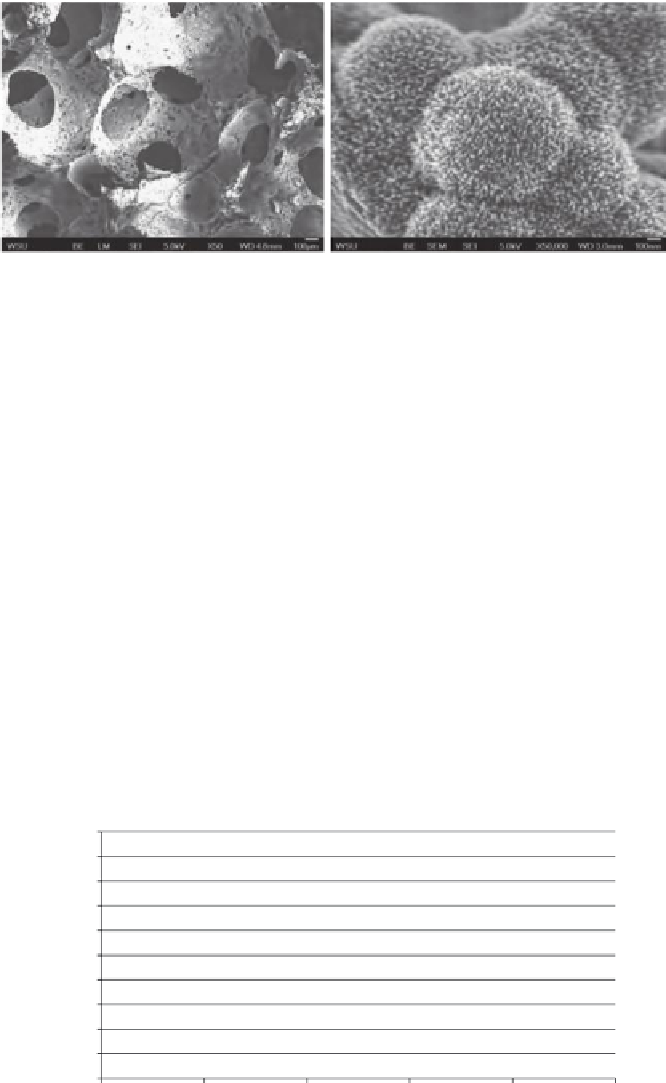Environmental Engineering Reference
In-Depth Information
(a)
(b)
FIGURE 31.6
(a) Interconnecting pore structure; (b) surface containing 20-40 nm crystals.
more dificult. Enhanced adsorption is accomplished by reducing the size of the FeOOH
using nanoparticles, which have a large surface-to-volume ratio compared with other bulk
materials.
31.4.3 Media Performance
Nanomaterials signiicantly enhance the media to capture phosphorus. Early testing of
a nanomodiied granular product was done by Michigan State University (MSU) in 2007
(Safferman et al., 2007). This showed a much higher capacity and longer life than types
of media, indicating the potential for nanomodiied, high surface area media to remove
contaminants from water. Continued development under a grant by the National Science
Foundation resulted in a media with even higher capacity for phosphorus removal. Figure
31.7 shows a comparison with other materials, including a commercial iron-activated alu-
mina. Testing with actual septic system water containing 7-10 mg/L shows that phospho-
rous continued to be captured for >15 months and the overall capacity (mg/g) was 5-10×
higher than other commercial products.
Capacity of P (mg/g of media) with different media
100
90
Capacity of P (mg/g of media)
80
70
60
50
40
30
20
10
0
Soil
Natural media of
Fe and Al-oxides
Activated
alumina
MMT media—
first version
(MSU data)
MMT media—
latest version
(MMT data)
Type of media
FIGURE 31.7
Capacities of natural and manufactured media for phosphorus removal.




